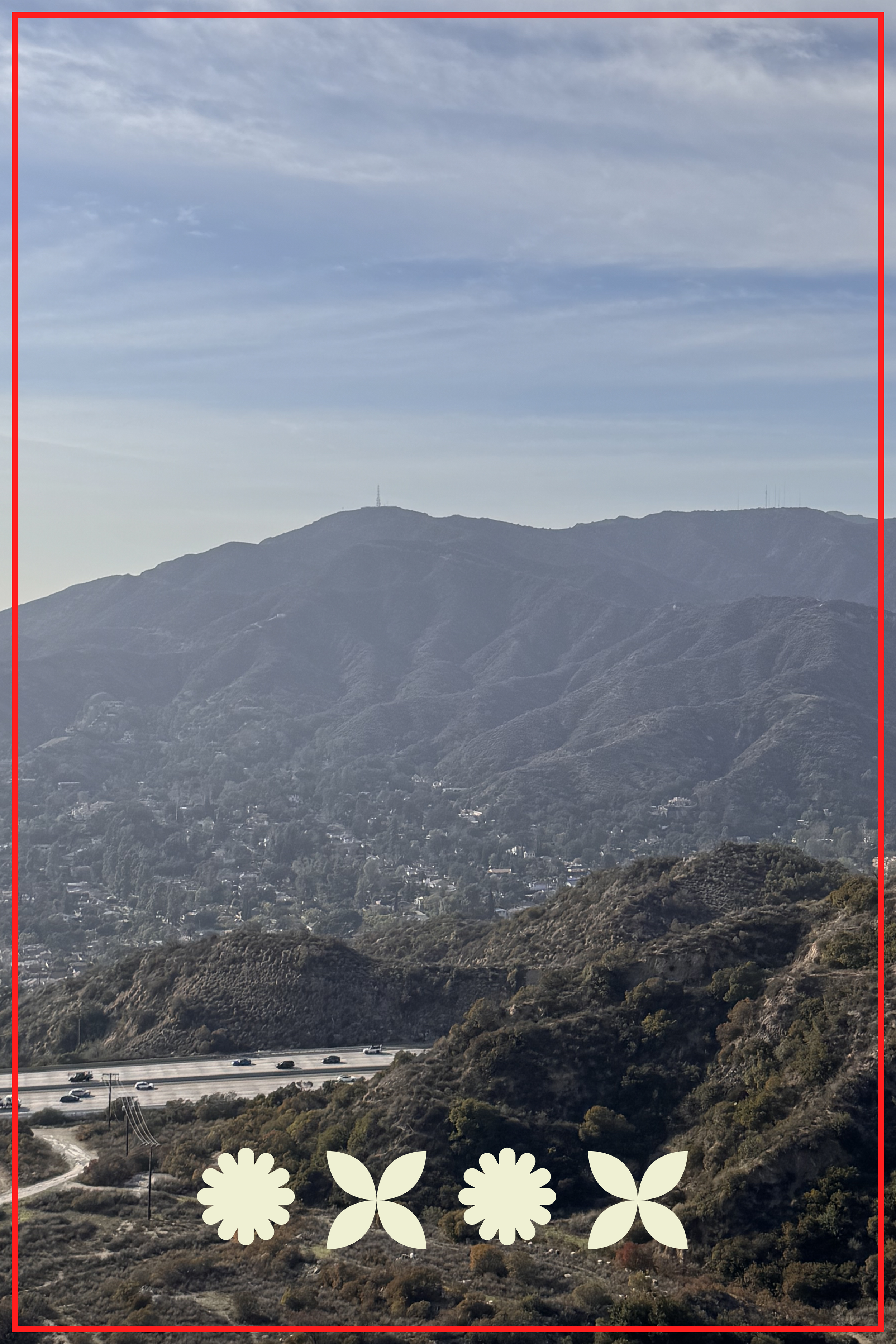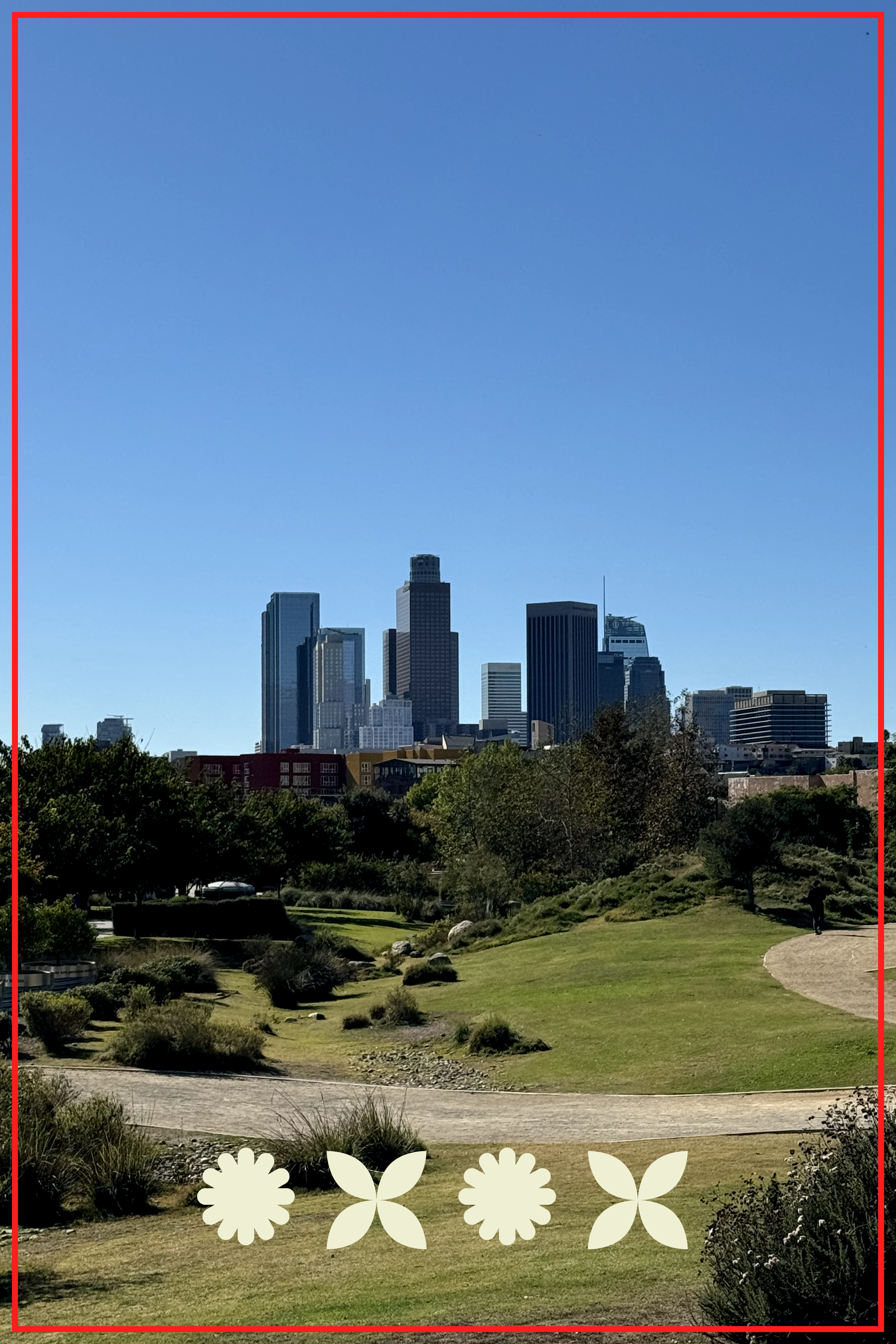Talk For The Wende, In Linen And Lamplight: The Secret Lives Of Slavic Needlework
Behind the embroidered rushnyky that grace kitchen tables and the geometric patterns that edge bedroom linens lies a visual language as rich as any written script. Across the Slavic lands—the vast territories spanning from Russia and Ukraine to Poland, Czech Republic, and the Balkans—women have stitched meaning into fabric, creating what appears to be simple household decoration but carries layers of cultural knowledge.
Photo by Eugenia Romanova on Unsplash
Join upcoming events on Eventbrite
〰️
Join upcoming events on Eventbrite 〰️
This research emerges from my role as an invited artist at the Wende Museum in Culver City, designing workshops exploring Slavic folk embroidery as part of their ongoing series connecting traditional crafts to cultural memory. Through hands-on exploration of traditional patterns, color symbolism, and geometric meanings, we're uncovering how these textile traditions preserved and transmitted cultural knowledge through generations of makers.
In cottages across these regions, mothers embroidered protective symbols, communities created textiles for seasonal celebrations, and families passed down patterns through generations of hands. Each red diamond carried wishes for fertility, black borders provided protection, and white backgrounds offered purity and new beginnings. The depth of symbolic meaning in these patterns reveals how textile work served multiple functions simultaneously: practical household items, artistic expression, spiritual practice, and cultural education all woven together in a single piece of cloth.
Key Threads
Key questions this article explores:
How do Slavic embroidery traditions connect craft, art, and daily utility in ways that strengthen community bonds?
What can local mythology and earth-based celebrations teach us about finding meaning in everyday textile work?
How do traditional patterns carry symbolism that bridges historical living with contemporary life?
Why does understanding textile traditions help us connect more deeply with other cultures in 2025?
The Cryptogram System: Stitches As Letters
Slavic folk embroidery operated on a sophisticated visual cryptogram system. Each traditional motif functioned as a distinct "letter" in an alphabet of spiritual meaning, and combinations of motifs created complete "sentences" encoding complex instructions for protection, blessing, and divine communication.
The diamond shape (ромб) wasn't just geometric decoration but a specific letter meaning "fertility" and "plowed field." When embroidered in red thread, it activated life force energy. When outlined in black, it provided protection during agricultural cycles. When clustered in groups of three, it invoked the triple goddess aspects.
The Tree of Life motif served as punctuation in this visual language—marking complete thoughts and separating different magical instructions within a single textile. But unlike decorative trees, these encoded specific spiritual technology: the roots connected to ancestral wisdom, the trunk channeled energy between realms, and the branches reached toward divine guidance.
The traditional white, red, and black palette followed strict grammatical rules. White always provided the "paper"—the neutral canvas that could receive any spiritual message. Red activated and energized whatever symbols it outlined. The Russian word 'krasny' it addition to red also means “beautiful”. Black provided protection and boundary-setting around vulnerable areas. Breaking these color grammar rules weakened the magical effectiveness of the completed textile.
This cryptogram system allowed practitioners to encode incredibly complex spiritual instructions into household textiles that appeared perfectly innocent to untrained eyes while functioning as detailed guidebooks for those who understood the visual vocabulary.
Sources
Maslova, G.S. "Орнамент русской народной вышивки как историко-этнографический источник" (1978)
Euromaidan Press (2021) "Secret ancestral codes: 12 main symbols in Ukrainian embroidery"
Носань, Т.М. "Региональные особенности русской традиционной вышивки"
NashaHistory.ru (2025) "Рушник - символ святости, чистоты, защиты"; nashahistory.ru
The Mathematics Of Meaning & Spiritual Instruction
Slavic geometric patterns weren't abstract designs but precise mathematical formulas encoding specific spiritual instructions. Each geometric relationship created different energetic effects, and master embroiderers understood exactly which mathematical combinations would produce desired spiritual outcomes.
Rectangle: The fundamental rectangular shape of rushnyky created a mathematical bridge between earthly (horizontal) and divine (vertical) realms. The 2:3 or 3:5 proportional relationships most commonly used replicated golden ratio mathematics found throughout nature, making the cloth itself a harmonious interface between human and cosmic scales.
Octagonal: The eight-pointed star (one of the most frequent motifs) encoded the mathematical structure of life force energy. Modern biophysics confirms that octahedral shapes model the energy fields surrounding living organisms, and human embryos begin development through eight-cell division. Slavic embroiderers were encoding the fundamental mathematics of biological creation into their textiles. The eight-fold pattern created actual energetic resonance that amplified the textile's spiritual effectiveness. The linguistic archaeology reveals similar precision: the word "rushnyk" derives from "ruka" (hand), while the suffix "-nyk" creates agent nouns throughout Slavic languages, literally meaning "that which is made by hand" and connecting every embroidered cloth to the physical act of creation. The most common traditional techniques included nabor (вышивка набором), rospis stitch (шов роспись), and counted satin stitch (счетная гладь)—each creating different spiritual effects through their unique interaction with the fabric's structure.
Cross: Cross symbolism reveals another layer of encoded wisdom. In pagan Slavic understanding, the cross represented the union of masculine and feminine cosmic forces—like Shiva and Shakti in Hindu tradition—the complementary energies essential for creation and universal balance. Every cross stitched into fabric wasn't just later Christian symbolism but ancient recognition that life emerges from the dynamic interaction of opposing yet harmonious forces.
The anthropomorphic and natural forms:
Hourses: The horses flanking goddess figures weren't decorative but functional elements encoding specific protection instructions. Horses represented more than agricultural blessing—they embodied the seasonal cycles themselves, their daily work mirroring the sun's journey across the sky. Both horse and sun determined whether families would survive winter, making embroidered horses prayers for cosmic and earthly rhythms to continue their life-giving dance.
Birds: Birds served a dual purpose beyond seasonal renewal—they carried prayers upward to divine realms and brought guidance back down to earth. Different species encoded different types of spiritual communication: larks announcing spring's arrival, while ravens and crows served as messengers between the world of the living and the realm of ancestors.
Goddesses: The prominent female personage appearing in northern Russian embroidery—identified by scholars as representing Mokosh, Berehynia, or Earth Mother—functioned as the primary goddess glyph in the cryptogram system. Medieval chronicles describe Mokosh as appearing in embroidered form with "raised arms in blessing gesture" and "elaborate headdress," marking her positioning at pattern centers as the supreme divine "letter" that activated all surrounding symbols.The tradition honored the рожаницы (birth goddesses)—divine figures governing fertility, childbirth, and the earth's reproductive cycles. These goddesses connected directly to the archetypal understanding of feminine creative power flowing through both human and agricultural fertility. The same basic goddess form appeared in different seasonal configurations throughout the year, with surrounding geometric elements changing to reflect agricultural cycles and spiritual needs. Spring goddess figures emphasized fertility symbols, summer versions featured abundance motifs, autumn patterns included harvest protection elements, and winter compositions focused on survival and preservation magic.
Sources:
Apelsyn.ru (2025) "Вышивка росписью: техника шитья, схемы, примеры орнаментов и сюжетов"; apelsyn.ru
Smotrenka.ru (2025) "Свадебный рушник и символы вышивки"; smotrenka.ru
LiveMaster.ru (2025) "Русская народная символика"; livemaster.ru
Master-Angel.ru (2025) "Орнамент русской народной вышивки"; master-angel.ru
Perunica.ru (2025) "О семантике изображений и орнамента русской"; perunica.ru
"Ukrainian Embroidery"; Encyclopedia of Ukraine (2024) "Embroidery"
Wikipedia (2025) "White," "Black," "Color Symbolism"
A Goddess Who Taught Women To Stitch Spells
At the center of Russian textile traditions stood Mokosh—the only female deity among the seven primary Slavic gods recorded in the Primary Chronicle of 980 CE, governing all aspects of textile arts and women's domestic wisdom. According to the chronicles, Prince Vladimir Sviatoslavich erected wooden idols of major deities on the hills of Kiev, with Mokosh standing as the sole goddess among the pantheon of Perun, Khors, Dazhbog, Stribog, and Simargl. Mokosh was forgotten with Christianity recast as a figure of evil and dangerous witchcraft.
Mokosh was the goddess of earth, waters, and fertility, and the damp earth. The phrase “Mother - damp earth” (Мать — сыра земля) is a poetic expression captures the nurturing, generative quality of earth that can bring forth life. Receiving seeds into herself, Earth becomes pregnant and gives a new harvest; she is the universal Mother and nourisher: she feeds the living and receives the dead.
The Slavic Earth Mother tradition connects to a vast heritage of earth goddesses, including Greek Demeter, Iranian Anahita who governed waters and fertility, and Lithuanian Žemyna. These deities across cultures shared the fundamental archetype of earth as divine feminine force—the life-giving, nurturing mother who receives seeds, gestates new life, and provides sustenance to all living beings. Like Earth, Mokosh embodies the female seasons and spectrum of feminine archetypes: the Maiden, the Mother, the Queen and the Crone (also embodied by Baba Yaga as the dark feminine weaver who tests and transforms through challenging trials).
Working alongside Mokosh at her cosmic loom are her two helpers: Dolya (Sreča) sits at her right hand, tying knots for good deeds that will manifest as happiness, while Nedolya (Nesreča) sits at her left, tying knots for selfish actions that become life trials. Together they weave the "canvas of life," with each knot representing lessons that souls must learn through their earthly journey. In Baltic tradition, goddess Laima—called "Mother of Happiness" in Lithuanian and Latvian cultures works alongside Dekla and Karta to determine human fate at birth.
Mokosh wasn't just patron of weaving but the cosmic weaver herself—spinning the threads of fate, determining life outcomes, and guiding women's hands in reproducing her divine patterns through earthly materials. Her mythological functions reveal the theological framework underlying all Russian textile work:
As Fate Spinner: Mokosh controlled destiny through thread manipulation, making every embroidered pattern a prayer directly to the force determining life outcomes. Women embroidering traditional motifs were literally collaborating with the goddess of fate to influence their family's future.
As Earth Mother: She embodied agricultural wisdom and seasonal cycles, explaining why so many embroidery patterns encode farming knowledge—when to plant, how to protect crops, how to ensure fertility of land and livestock.
As Divine Matchmaker: Mokosh "wove" relationships by bringing lovers together, making wedding rushnyky particularly powerful ritual objects that invoked her direct intervention in romantic matters.
Mokosh belongs to a remarkable global tradition of divine mothers who control destiny through textile metaphors. The Greek Moirai—Clotho the Spinner, Lachesis the Allotter, and Atropos the Cutter—literally spin, measure, and cut the threads of human fate, while the Norse Norns weave destiny at the Well of Urd beneath the World Tree. Roman Parcae, Germanic Matronae, and Celtic Triple Goddesses all governed life cycles through similar textile imagery, suggesting that humans across cultures intuitively understood creation and fate as acts of weaving. Even Hindu traditions speak of Maya weaving the fabric of reality itself, while Native American Spider Grandmother teaches both literal weaving skills and the deeper understanding that life itself is a web of interconnected threads. This universal pattern reveals textile work as humanity's oldest metaphor for divine feminine creativity—the understanding that existence itself emerges from the patient, skilled interweaving of individual threads into coherent, meaningful patterns.
Sources:
Wikipedia (2025) "Mokosh"
Primary Chronicle, 980 CE
FolkCostume&Embroidery (2011)
"Russian Embroidery, an Overview"
Ivan Honchar Museum collection documentation
Regional Dialects In Embroidery Languages
Just as spoken Russian developed regional dialects, embroidery patterns evolved distinct "visual dialects" that encoded location-specific wisdom while maintaining the underlying grammatical structure of the overall cryptogram system.
Traditional Slavic clothing and embroidered patterns faced systematic suppression across empires that dismissed peasant populations as too simple and backwards. Whether under Tsarist Russification, Austro-Hungarian Germanization, or modernization efforts throughout Slavic lands, the drive to westernize and 'educate' led to deliberate attrition of folk expression and devastating loss of local knowledge systems.
The Russian Folk Embroidery Map illustrates how these regional variations developed across different territories, with each area maintaining distinct characteristics while sharing core symbolic vocabulary.
Northern Russian embroidery developed a primarily geometric dialect featuring vivid red stitching on white backgrounds. The horse-and-rider motif became the signature "word" of this region, encoding protection magic specifically adapted to harsh northern conditions and nomadic threats. The mathematical precision of these geometric patterns reflected the clarity and directness required for survival in extreme environments.
Central Russian regions developed more colorful and complex visual vocabulary employing three or more colors in single garments. This reflected the agricultural abundance of the heartland and the leisure time available for creating elaborate textile messages. The floral motifs that dominated this dialect encoded seasonal wisdom and fertility magic adapted to rich farming communities.
Different regions developed specialized "pronunciation" through distinct stitching techniques. The ancient nyz technique (worked on the reverse side) created negative-space patterns that functioned differently from positive-space embroidery. Two-sided satin stitch created reflective surfaces that amplified light and color energy. Each technical approach produced different spiritual effects even when using identical motifs.
Regional border patterns functioned like accents—immediately identifying the geographical origin of a textile while serving protective functions adapted to local environmental and spiritual challenges. Poltava's intricate white-on-white work created subtle protection suitable to peaceful agricultural areas, while Hutsul geometric contrasts provided stronger boundaries appropriate to mountain border regions.
Similar regional mapping exists for neighboring Slavic territories including Belarus, Estonia, and Mordovia, each showing how local environmental conditions and cultural exchanges shaped distinct embroidery vocabularies while maintaining connection to the broader Slavic symbolic system.
“Everyone can call on the magic powers of the web of life. You have to find it in yourself.”
Reading Domestic Space Through Textile Placement
Russian homes functioned as three-dimensional books written in textile language, with embroidered cloths arranged according to precise grammatical rules that transformed domestic space into coherent spiritual communication systems.
The Pokuttia as Domestic Power Center: The pokuttia (eastern corner) of traditional Slavic homes served as the primary "title page" of the domestic textile book. Rushnyky arrangement in this space followed strict rules—ceremonial cloths creating hierarchical spiritual authority, everyday textiles providing continuous protection, and seasonal rotations updating the spiritual "text" according to agricultural and liturgical cycles. This corner functioned as a domestic power center where the family's most important textiles created a concentrated field of protective and blessing energy.
Stitch Techniques as Energy Modulation: Different embroidery techniques produced different energetic effects even when using identical motifs. The ancient nyz technique (worked on the reverse side) created negative-space patterns that functioned like energetic windows, allowing beneficial forces to flow through while blocking harmful influences. Two-sided satin stitch created reflective surfaces that amplified and broadcast the energy of thread colors, while cross-stitch created stable, grounded energy patterns ideal for long-term protection and blessing work.
Room-by-Room Vocabulary: Different areas of the home required different textile vocabulary. Kitchen textiles emphasized fertility and abundance patterns, bedroom cloths featured protection and blessing motifs for intimate relationships, and entryway textiles provided boundary protection against negative influences. Each room's textile arrangement created coherent spiritual "paragraphs" addressing location-specific needs.
Furniture as Punctuation: The placement of embroidered textiles on specific furniture pieces functioned like punctuation marks in the domestic spiritual text. Table runners created horizontal "lines" of continuous blessing, chair backs provided vertical "exclamation points" of protection for specific family members, and window treatments served as "quotation marks" framing the view between inner domestic safety and outer worldly challenges.
Seasonal Text Updates: Traditional homes required regular updating of their textile "text" according to seasonal and agricultural cycles. Spring cleaning involved more than physical maintenance—it meant updating the domestic spiritual communication system with appropriate seasonal vocabulary and retiring winter protection patterns in favor of growth and fertility themes.
Today, artisans across Slavic regions are returning to these traditional patterns with renewed understanding of their deeper meanings. Modern embroiderers in Ukraine, Russia, Poland, and throughout the diaspora are rediscovering not just the techniques but the spiritual significance encoded in ancestral designs, creating a bridge between ancient wisdom and contemporary practice.
Sources:
Orthodox Prayer Organization "Orthodox Prayer"
True Orthodox Diocese of Western Europe (2024)
"Understanding Hesychasm"
Носань, Т.М. "Региональные особенности русской традиционной вышивки"
Russian Museum classification materials on embroidery techniques
Various ethnographic and cultural preservation sources
Maslova, G.S. "Орнамент русской народной вышивки как историко-этнографический источник" (1978)
Woven Wisdom
Truth worth holding onto:
Symbolic Persistence: Archetypal symbols like roses transcend their medium, carrying essential human meanings across cultures, technologies, and political systems through their capacity to hold accumulated significance.
Domestic Ritual: Traditional crafts served as vehicles for preserving spiritual and cultural knowledge during periods of suppression, proving that beauty itself can be a form of resistance when encoded with deeper meaning.
Sacred In Daily Life: The most profound spiritual knowledge often travels through the most ordinary objects—embroidered textiles, patterned scarves, decorated pottery—making the sacred accessible in daily life.
Cultural Memory Toolkit
Pattern Recognition Practice: Notice repeating patterns in your daily environment—from digital interfaces to textile designs to architectural details. Consider what cultural information these patterns might be carrying forward from their origins.
Embroidery As Meditation: Try learning a traditional embroidery technique, focusing on how the repetitive action of stitching creates both meditative state and accumulated beauty—experiencing firsthand how "pixels" of thread become complex images.
Ancestral Pattern Research: Investigate traditional textile or decorative patterns from your own heritage, looking specifically for their symbolic meanings and how they were preserved through domestic arts during periods of cultural change.
Perhaps the most radical discovery in studying Slavic embroidery is realizing that our ancestors weren't creating "folk art" at all—they were engineering. Every red thread calculated to activate life force, every geometric border mathematically designed to contain spiritual energy, every goddess figure precisely positioned to channel divine intervention. These women were spiritual technicians working with the most advanced interface available: the direct manipulation of matter through intention.
While we celebrate our digital revolution, Slavic embroiderers had already solved the fundamental challenge of encoding complex information into portable, beautiful, functional objects that could survive centuries of political upheaval. They created the ultimate cloud storage: wisdom uploaded into cloth, accessible to anyone who learned to read the visual syntax, backed up across thousands of households, and automatically transmitted through the simple act of teaching a daughter to stitch.
Today, as we struggle to maintain human connection in an increasingly virtual world, these textile technologies offer something profound: proof that meaning doesn't require screens, that communication can be literally woven into the fabric of daily life, and that the most revolutionary act might be picking up a needle and discovering what your hands remember about making beauty that carries truth.
Events
Ready to dive deeper? Join our community of master artisans, cultural stewards, and creative practitioners exploring the intersection of traditional craft and contemporary life. Classes, intensives, and ceremonial gatherings across LA and online for artists, designers, crafters, illustrators, and makers of all backgrounds and levels. Our programs unite ancient wisdom with contemporary practice, cultivating living heritage through embodied craft, storytelling through making, communion with nature, cultural preservation, meditative practice, and the celebration of life's luminous beauty.
#slavicembroidery #rushnyk #mokoshgoddess #traditionalstitching #sacredgeometry #embroideredwisdom #slavicfolklore #textilecryptogram #russianembroidery #culturalpreservation #domesticmagic #ancestralpatterns #handworktradition #spiritualtextiles #womensknowledge #folkloreembroidery #traditionalcraft #symbolicstitching #slavicculture #needleworkhistory



















